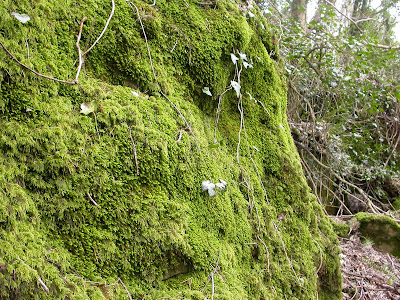While
taking the photo I remembered that I had spotted a nice patch of male Lunularia
in one of our flower beds last autumn, so thought I would get a pic of that –
unfortunately the patch had almost completely degraded, but there was one male
bit still showing.
Later
that day, I made use of my daily exercise allowance by walking along some of
the lanes near home, returning along the canal towpath. The
only bryo that caught my eye was a lovely patch of fruiting Bartramia pomiformis,
on a small rock embedded in a lane bank.
Walking past a pile of mixed clay and rubble by the canal, something shiny caught my eye
and it turned out to be a small ammonite – a bit of a surprise as it not the
sort of fossil you expect to see in Devonian country. Further fossicking resulted in a few more ammonite
specimens and bits of broken Gryphaea and belemnite.
























